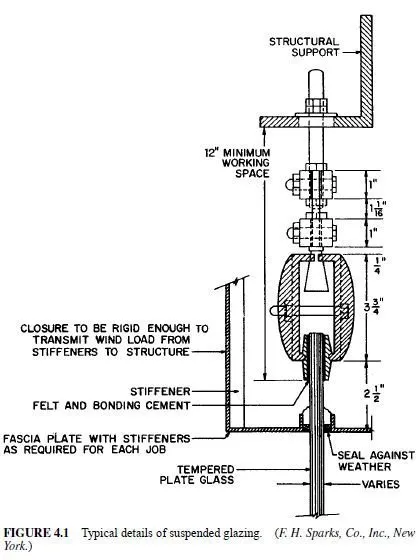Glass blocks are made by first pressing or shaping half blocks to the desired form, then fusing the half blocks to form a complete block. A block is usually 37â„8 in thick and 53â„4, 73â„4, or 113â„4 in square. The center of the block is hollow and is under a partial vacuum, which adds to the insulating properties of the block. Corner and radial blocks are also available to produce desired architectural effects.
Glass block is commonly laid up in a cement or a cement-lime mortar. Since there is no absorption by the block to facilitate bond of mortar, various devices are employed to obtain a mechanical bond. One such device is to coat the sides of the block with a plastic and embed therein particles of sand. The difficulty in obtaining permanent and complete bond sometimes leads to the opening up of mortar joints.
A wall of glass block, exposed to the weather, may leak badly in a rainstorm unless unusual precautions have been taken during the setting of the block to obtain full and complete bond.
Glass blocks have a coefficient of thermal expansion that is from 11â„2 to 2 times that of other masonry. For this reason, large areas of block may expand against solid masonry and develop sufficient stress so that the block will crack. Manufacturers usually recommend an expansion joint every 10 ft or so, to prevent building up of pressure sufficient to crack the block. With adequate protection against expansion and with good workmanship, or with walls built in protected locations,
glass-block walls are ornamental, sanitary, excellent light transmitters, and have rather low thermal conductivity.



